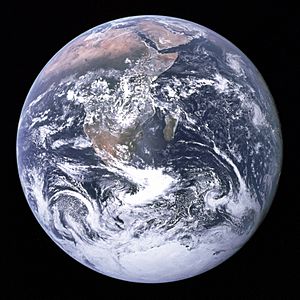Physical system facts for kids
In physics, a physical system is any object or group of objects that scientists want to study. They use the laws of physics to understand how it works. Think of it like choosing a specific part of the world to focus on.
For example, a single atom can be a physical system. So can all the water in a lake. Everything outside the system is called the environment. When we study a system, we usually ignore the environment. We only pay attention to how the environment affects the system itself.
The entire universe could be seen as one giant physical system. But it's often much easier to study smaller parts. Scientists often look at just a few particles at a time. They treat these particles as their own tiny quantum systems. There are many different physical systems that physicists love to explore.
Examples of Physical Systems
Here are some common examples of physical systems:
- The Earth's atmosphere (the air around us)
- An object falling from the sky
- A hydraulic pump (like those used in car lifts)
- The wing of an airplane as it flies
- A glass of water sitting on a table
- A crystal or other solid materials
- The nucleus (center) of an atom
- Tiny, fundamental particles like quarks
Physical systems are different from conceptual systems. Conceptual systems are about ideas or theories. For instance, a Turing machine is a conceptual system. It's a theoretical idea about how computers work, not a real physical object.
What else to explore?
See also
 In Spanish: Sistema físico para niños
In Spanish: Sistema físico para niños


